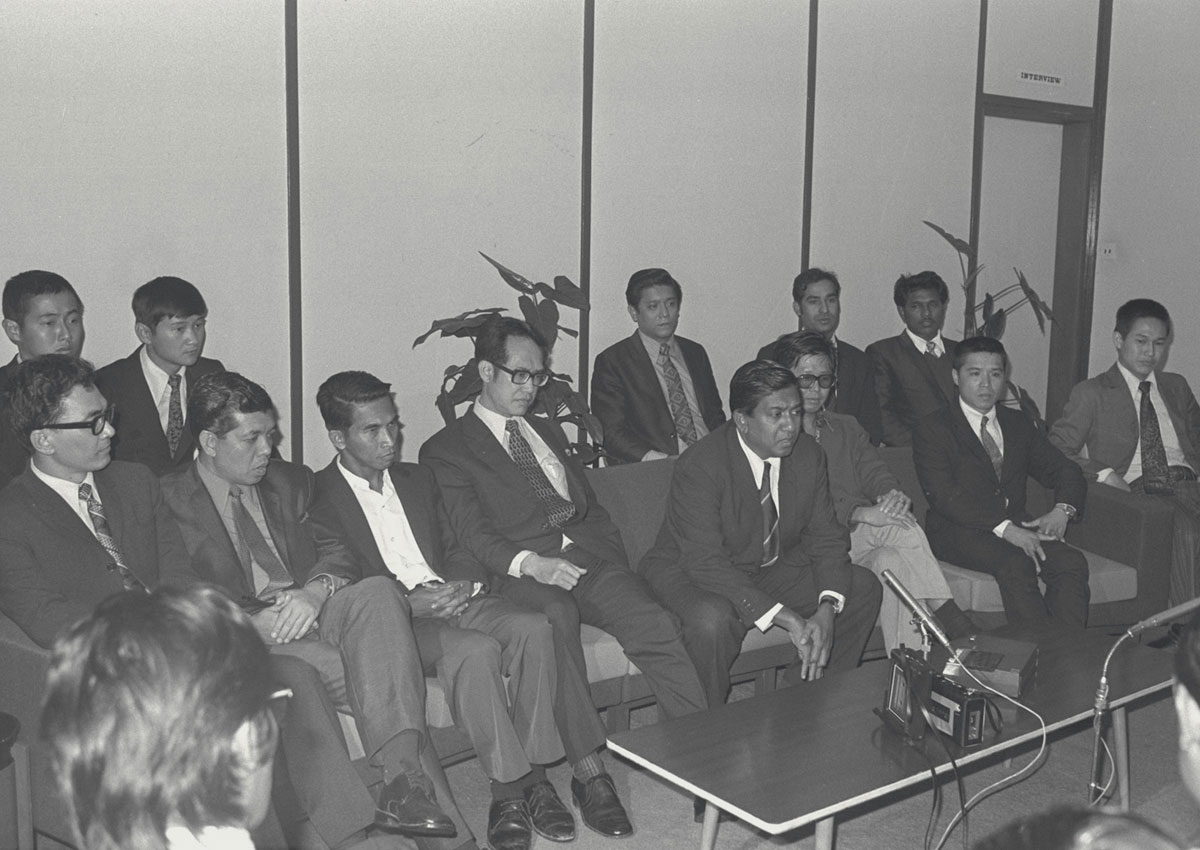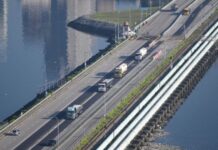After the passing of former president S R Nathan, there has been much talk about the 1974 Laju hijack and the bravery of the 13 men who traded places with the hostages. Who are these men?
In 2011, before he retired from the highest office, the late president S R Nathan hosted a small tea reception attended by seven of 12 Singaporean men.
It was a private function and some of the men were recognisable faces to Istana staff.
“It was our first and only reunion, and we recounted some of the things that happened in 1974. We were at ease with the results (of the crisis),” says Mr Tee Tua Ba, 74, the former commissioner of police.
Mr S. Rajagopal, 76, a retired counter terrorism officer with the Internal Security Department, was also there, as were several commando officers. He took pictures of the gathering.
He tells The New Paper on Sunday: “I met the President at an earlier event and told him we should have a gathering for the men.
“We had not seen each other as a group since.”
That was the day 13 men traded places with hostages of the Laju ferry to guarantee safe passage out of Singapore for four hijackers.
The details were never shared publicly and none of the men believed in self-glorification.
As a result, for more than 30 years, few outside the group knew of the men’s readiness to make the ultimate sacrifice.
Then before retiring, Mr Nathan revealed to The New Paper what took place on the Feb 8, 1974, Japan Airlines flight to Kuwait with the four Laju hijackers.
And he gave even more details in his book, An Unexpected Journey: Path To The Presidency.
Among the 13 were commandos, including LTC (Retired) Clarence Tan Kim Peng, Singapore’s first US-trained special forces soldier.
And ISD officers including director Yoong Siew Wah who, like the others, was ready to lay down his life.
INTERPRETERS
But there were also two non-security men who had acted as interpreters during the crisis.
One was a former official of the Syariah Court while the other had worked at the then-Singapore Broadcasting Corporation.
Both had died before the Istana reunion.
There has only been one publicly seen picture of the 13 men, taken at a press conference after the men had safely returned to Singapore on Feb 9.
They never again assembled as a group for more than 35 years.
The 13 men
DEFENCE MINISTRY
Mr S R Nathan
Director, Security and Intelligence Division, whom Prime Minister Lee Kuan Yew and Defence Minister Goh Keng Swee told to lead the 13-men exchange.
Captain Clarence Tan Kim Peng
Commanding officer of the Singapore Armed Forces Regular Battalion, the precursor of the 1st Commando Battalion. He was one of the first local officers to attend the ranger and airborne courses conducted by the US Army. He was involved with the elite soldiers until 1988, then he became a defence attache in Australia before retiring in 1992.
Captain Gwee Peng Hong
Commando officer who was the commanding officer of the first batch of NS commandos.
Mr Teo Ah Bah
Commando officer.
Mr Tan Lye Kwee
Commando officer.
HOME AFFAIRS MINISTRY
Mr Yoong Siew Wah
Director of Singapore’s Internal Security Department (ISD), 1971 to 1974. He was previously the Director Of The Corrupt Practices Investigation bureau and an officer in the Singapore special branch in the 1950s.
Mr Tee Tua Ba
Officer-in-charge of Marine Police, 1974 to 1976. He became Commissioner of Police before retiring in 1997. He is now serving as non-resident ambassador to Switzerland.
Mr Seah Wai Toh
Superintendent of police. He later became deputy director of ISD after 1974 and was involved in negotiating the surrender of four Vietnamese hijackers of an Air Vietnam flight in 1977.
Mr S. Rajagopal
Assistant Superintendent, counter terrorism unit, ISD. His career was packed with dangerous assignments. He was involved in the Air Vietnam operations. Masquerading as a doctor, he boarded and got the injured out of the plane. Now 76, he serves as the honorary treasurer of the Singapore Police Retirees’ Association.
Mr Andrew Tan
Assistant Superintendent, counter terrorism unit, ISD.
Mr Saraj Din
Assistant Superintendent, ISD.
TRANSLATORS
Haji Abu Bakar
Religious teacher who was approached by the Ministry of Defence because of his fluency in Arabic. A civilian, he volunteered to join the men on the flight to Kuwait. He went on to become ustaz abu bakar and remained involved in the rehabilitation of terrorists. He died on jan 25, 2005.
Haji Abdul Rahman
Broadcaster with the Singapore Broadcasting Corporation and fluent in Arabic.
Last days of the Laju hijack
The Laju hijack unfolded over nine days. Melvin Singh and Hariz Baharudin zoom in on the last two days as the hijackers negotiated for safe passage out of S’pore
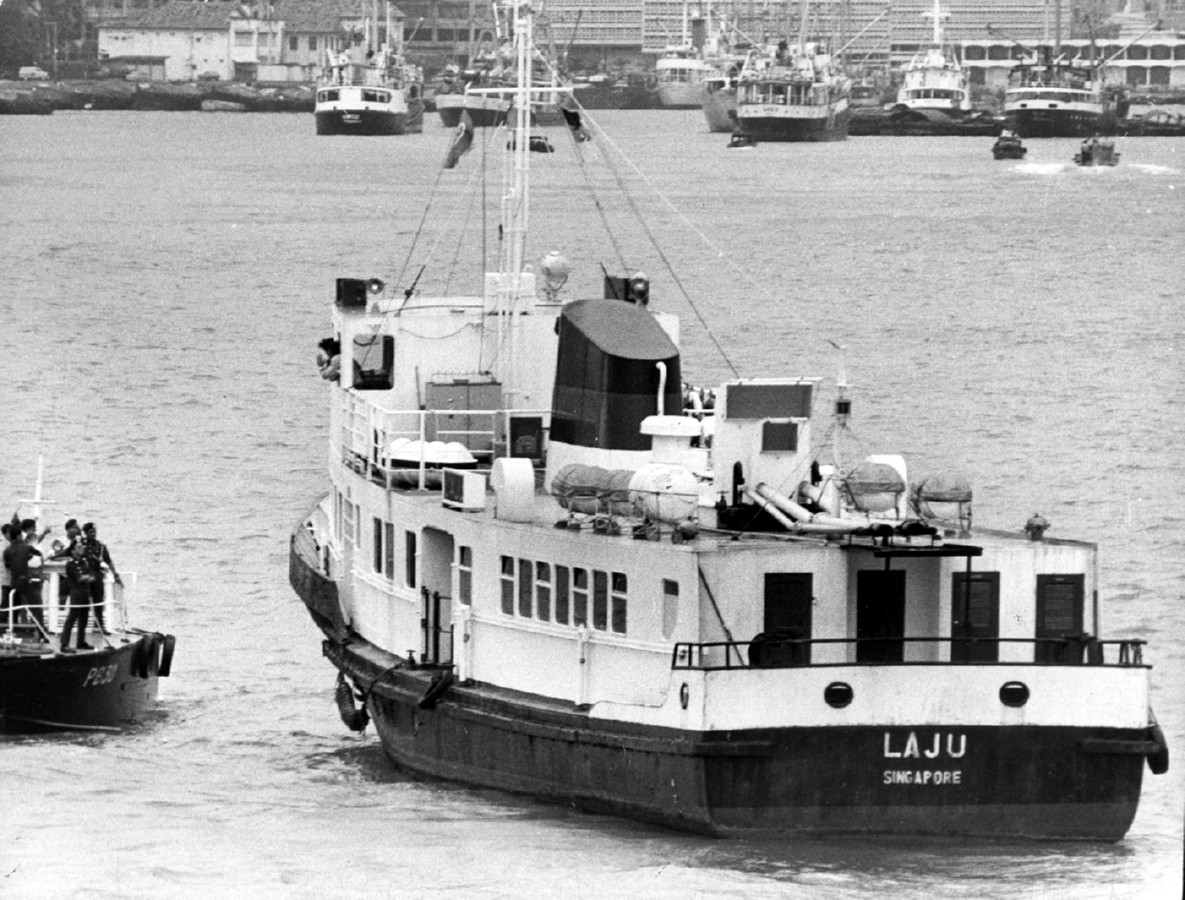
FEB 7, 1974
Police perform a series of practice runs on the route they are to take from the Marine Police jetty at Kallang to Paya Lebar Airport, where the Japan Airlines plane will be waiting.
Everyone is ready.
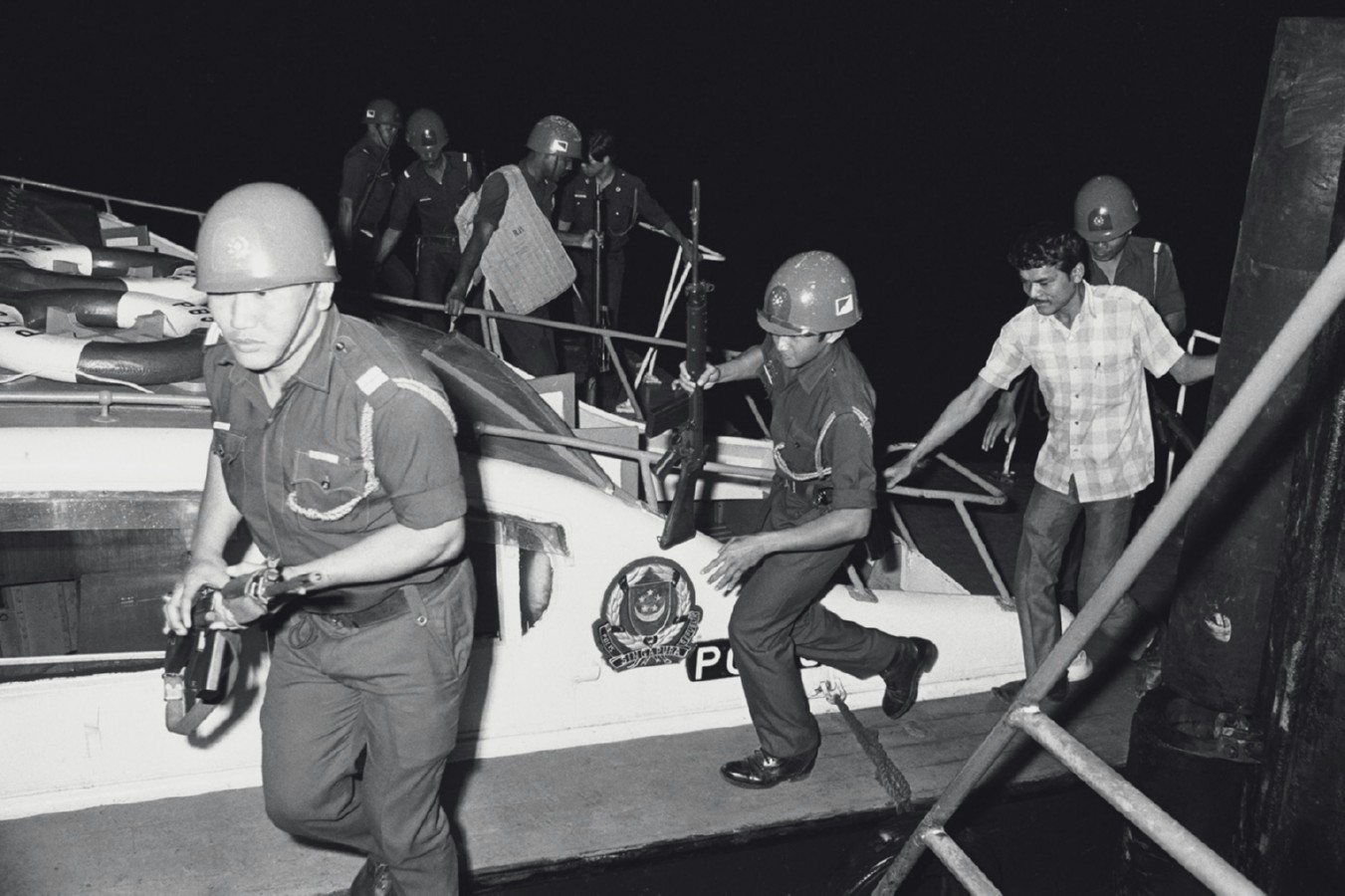
As the hijackers direct the Laju ferry to the jetty – a 30-minute journey – they keep their guns pointed at the heads of the three hostages.
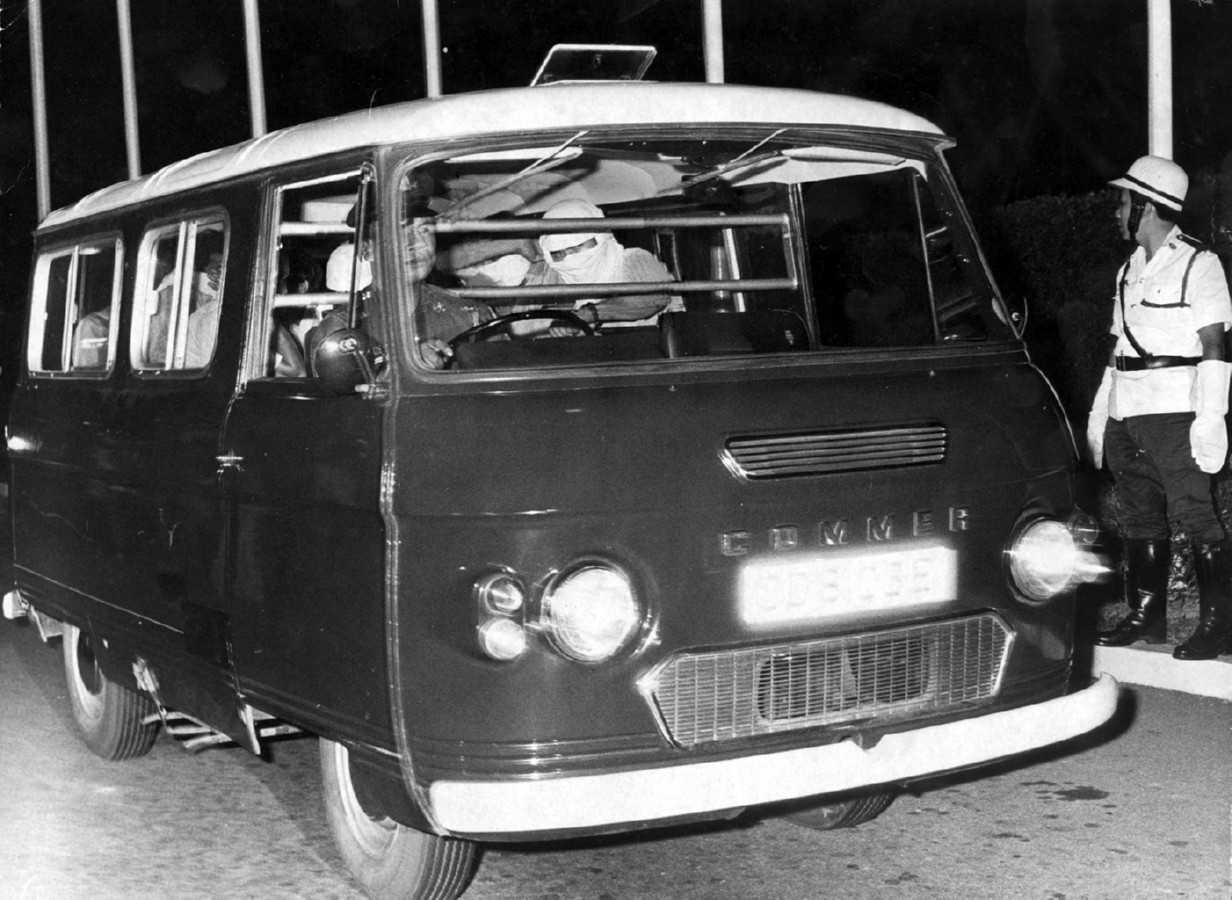 Then they board a police van and are taken to the Paya Lebar Airport VIP lounge.
Then they board a police van and are taken to the Paya Lebar Airport VIP lounge.
Mr Nathan relates in his book: “At the airport, Haji Abu Bakar, an Arabic-speaking official of Singapore’s Syariah Court, who had been helping in the exchanges with the Arab hijackers, was asked to come with us, making the team 13 in number.
“Because of the last-minute nature of the arrangements, he did not have a passport and boarded the plane without having spoken to his family.
“This was courageous – not having a passport could have created difficulties both on landing in Kuwait and on his departure.”
It is now time to surrender the weapons.
Mr Tee is with his translator in the VIP lounge and the four hijackers. He again reminds them to give up their weapons.
Mr Nathan relates what happens next: “Tee Tua Ba, seeing suspicion, fear and anger in their eyes, reminded them of the guarantee.
“He suggested if need be, they can keep one of the bullets in the leader’s Browning automatic, which would be held against his temple.
“While Tee was guiding the hand holding the gun to his own head, the hijacker said that would not be necessary. Then they all surrendered their arms.”
Mr Tee says he knew the airport was surrounded by armed police officers and soldiers.
“If they heard a shot fired, they would know I was dead or seriously injured and would have moved in,” he tells The New Paper on Sunday.
“I told them to surrender their arms and explosives. They had trusted me so far, and we had operated in good faith.
“The plane wouldn’t take off unless they did so and that was when I took his hand and guided the gun to my head.
“The Arab leader stopped me and said, ‘Brother, I trust you.'”
FEB 8, 1.25AM
Just before he boards the plane, Mr Tee gets a call.
“I received a sudden call from Mr Tay Seow Wah, Permanent Secretary of Home Affairs.
“I thought something had gone wrong. To my surprise, it was not.”
Mr Tay has a message from Mr Lee Kuan Yew.
“It was, ‘Job well done’,” adds Mr Tee.
No blood has been spilled so far.
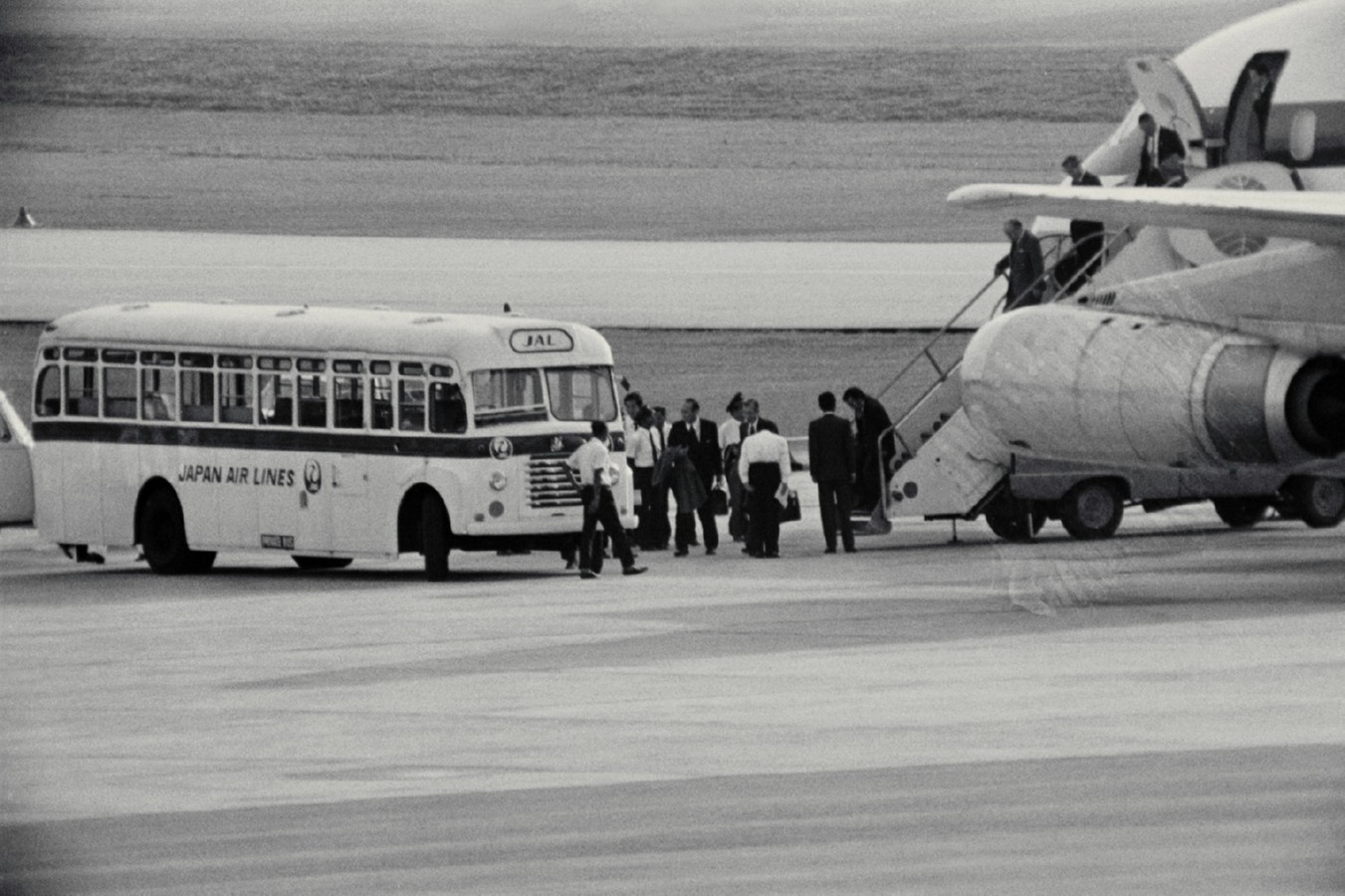 AIRPORT RUNWAY: Japanese government and Japan Airlines officials trooping down the gangway of the plane after its arrival from Tokyo on Feb 7, 1974.
AIRPORT RUNWAY: Japanese government and Japan Airlines officials trooping down the gangway of the plane after its arrival from Tokyo on Feb 7, 1974.
The four men, the 13 Singapore officials and other Japanese officials and crew of the Japan Airlines plane, which had flown in from Bangkok, are ready for take-off.
To Mr Tee, the four men are no longer hijackers. “I already totally disarmed and strip-searched all the hijackers and recovered all the weapons, which included revolvers and knives, before boarding the plane.
“The hijackers were at our mercy and in honour of our agreement, we were there to ensure their safe passage,” says Mr Tee.
But the four men eye the Japanese crew and officials with some suspicion. So they are separated from one another.
The hijackers sit at the front of the plane, the Singaporeans in the middle and the Japanese at the back.
Two Singaporeans, using the surrendered guns, keep guard.
During the flight, Mr Tee continues to talk to the four men.
He says it is extraordinary that while they are adversaries, the two Japanese men and the officials are polite with one another.
Mr Nathan tells him to continue engaging the Arabs.
“They asked me why I called them terrorists.
“The Arabs said there are bigger terrorists out there and they don’t know when they return home if they will disappear,” says Mr Tee.
Mr Nathan joins in the conversation and tells the Japanese to take the message home to their compatriots – the Singapore Government has guaranteed their safety, and now it is their turn to return the favour for the Singapore officials.
As the flight approaches Kuwait, the control tower refuses permission for the plane to land.
Then they say it can land but nobody is to leave the plane.
Instead, the men involved in the Japanese embassy siege are to board the plane, and the flight is to leave Kuwait – destination unknown.
In his book, Mr Nathan says: “Interpreting the true facts somewhat loosely, I said I was a special envoy of the prime minister of Singapore and had a special message for the prime minister of Kuwait.
“He asked me what the message was and asked me to read it out to him over the air. I refused.
“I told him my instructions were specific and that the message had to be delivered in person directly to his prime minister.”
The plane lands and is immediately surrounded by police and military vehicles.
Mr Tee describes the scene: “My god, the number of tanks and armoured personnel that surrounded us was astonishing.
“For about two hours, there was just silence.”
Then the Kuwaiti defence minister walks to the door of the plane.
Mr Yoong Siew Wah bravely goes forward with Mr Nathan and Haji Abu Bakar.
Mr Nathan tells them they are guarantees to ensure the safety of the four men. It is now the job of the Kuwaiti government to protect the officials.
He tells them if anything happens to them, their prime minister has to answer for it.
The Kuwaiti officials are in deep discussion with the Japanese officials but Mr Nathan budges in repeatedly.
“Mr Nathan kept reminding them of their obligations and finally the Kuwaiti official told him, ‘If you talk some more, I will arrest you,'” Mr Tee says.
The Singapore officials are told to get lost, and they do.
They decide to lie low and disperse so there is no way the Kuwaiti authorities can round all of them up and put them back on the same plane.
“We had to get lost for awhile. I gave each of our people US$100 from the funds that I had brought. We went shopping,” says Mr Nathan in his book.
When asked what he bought with the money, Mr Tee laughs.
“By that time I was so tired, having had little sleep for more than a week. But this was the burden we had to endure.”
FEB 8: THE RETURN
The men return home and assemble for a press conference at Paya Lebar Airport.
Their families are to wait a little longer for the reunion.
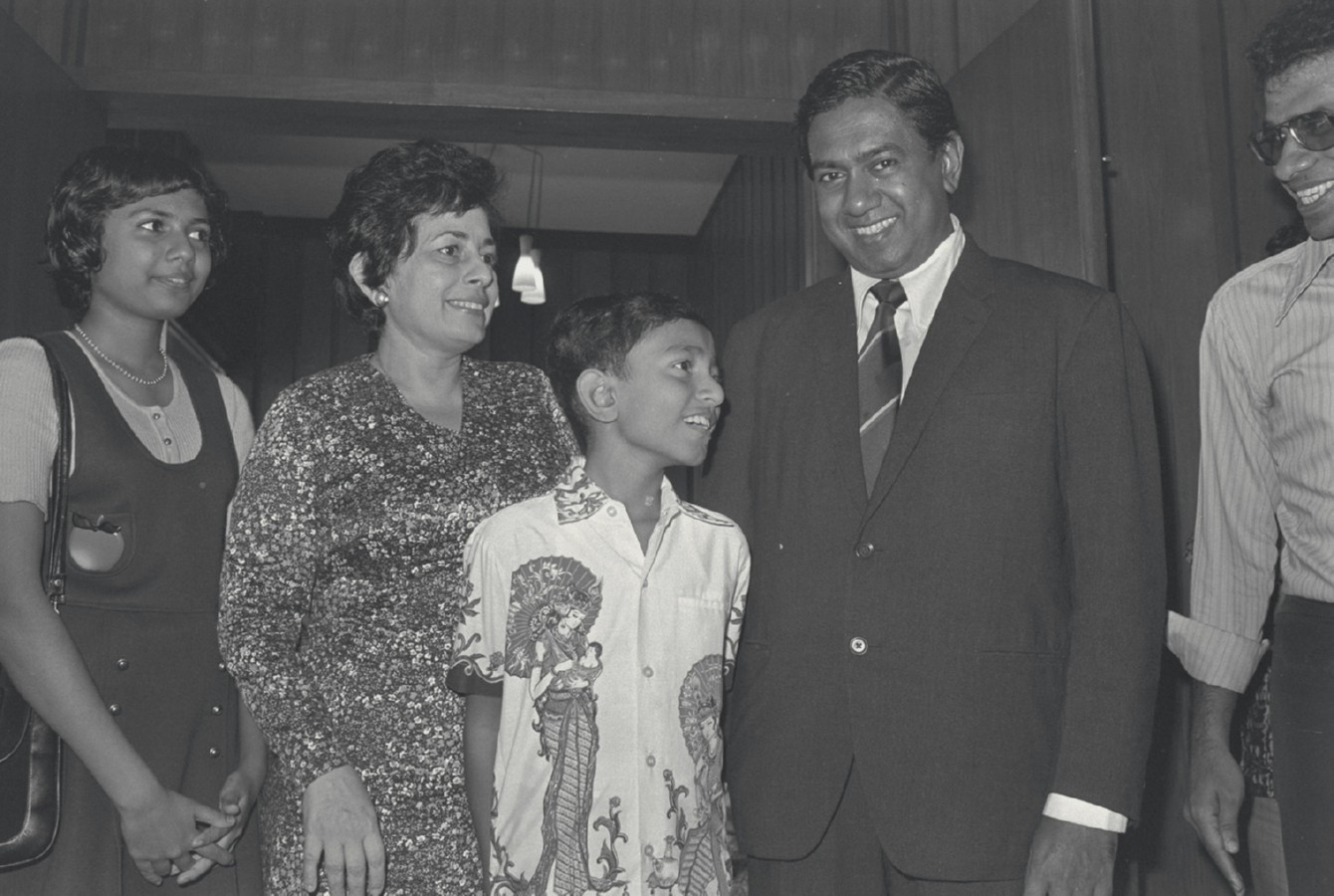 REUNITED: Mr S R Nathan was greeted by his wife and children on arrival at the Singapore airport.
REUNITED: Mr S R Nathan was greeted by his wife and children on arrival at the Singapore airport.
Did they think they were going to make it back alive?
Mr Tee ponders, then says: “My sons were one and two then. I thought they might not see their father again, and my wife would not see her husband.
“But we had to lead by example, and there was a job to be done. We did our job.”
He says it was less dangerous on the plane than before boarding it.
But this is also the same man who directed a gun to his own temple.
The need for operation secrecy meant there was to be no great fanfare, no welcoming party.
The brave 13 were just doing their job.
Excerpts taken from Mr S R Nathan’s book – An Unexpected Journey: Path To The Presidency published by Editions Didier Miller

This article was first published on Aug 28, 2016.
Get The New Paper for more stories.
